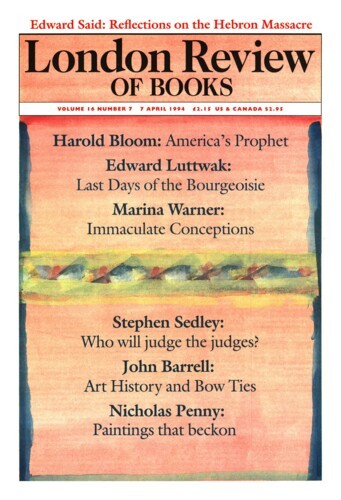Ronald Paulson
Ronald Paulson is the author of a three-volume study of Hogarth, two volumes of which have so far been published.
Whose Hogarth?
4 November 1993
Crossed Palettes
Ronald Paulson, 4 November 1993
There are two British world-class painters, Turner and Constable; but there are a number of others – at least as original and interesting as their contemporaries on the Continent – who created the English School of painting in the first two thirds of the 18th century. Starting with Hogarth, the first major native-born painter, they can be roughly divided into those who followed academic precepts, often slavishly but sometimes imaginatively (Reynolds, Wilson, Barry and West), and those whose paintings were, in important ways, anti-academic, or ‘English’: Hogarth himself, Zoffany, Wright of Derby, Stubbs, Gainsborough, Rowlandson and Blake. The second group all shared something of Hogarth’s anti-authoritarian scepticism. Turner acknowledged his allegiance to it when he donated Hogarth’s palette to the Royal Academy, while Constable donated Reynolds’s.’
Pieces about Ronald Paulson in the LRB
The view from the street
John Barrell, 7 April 1994
In the early Eighties, the main debate – though quarrel might be the better word – among historians of British art in its ‘great century’, from Hogarth to Turner, was...
Andrew Forge writes about the painter Frank Auerbach and the writer Robert Hughes, and about works of art in a dark age
Andrew Forge, 27 June 1991
The New York art scene in the Eighties presented spectacle of almost unrelieved decadence, in which the ‘virtues’ of the Reagan era ruled. In this desert of greed, vanity and...
Read anywhere with the London Review of Books app, available now from the App Store for Apple devices, Google Play for Android devices and Amazon for your Kindle Fire.
Sign up to our newsletter
For highlights from the latest issue, our archive and the blog, as well as news, events and exclusive promotions.


